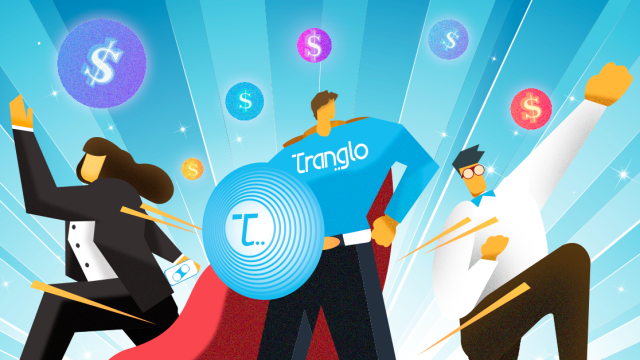Hello, 2024. Based on the speed of developments in the cross-border payment landscape in 2023, this looks like another year driven by innovative (rather than outright new) financial solutions, with trends carried forward from the last.
Last year, we discussed factors that could tackle cross-border payment challenges. In this article, we explore the top 5 cross-border payment trends in 2024.
Contactless payments
At a time when speed and convenience are the main concern, contactless payments will continue to become the preferred payment method. For example, its market size is expected to increase at a CAGR of 16% from 2023 to 2032, with transaction value doubling by 2026.
Contactless payments can be in the form of card payments, mobile wallets, QR code payments and wearable payments. Card payments and mobile wallets are expected to come as the first option in North America and West Europe. In contrast, QR code payments will continue to boom in Asia, particularly in Southeast Asia where several national QR payment standards have been integrated.
Wearable payments enable consumers to pay via their smartwatches, fitness trackers or other devices with NFC technology. The global market size of such payments was USD 47.14 billion and is estimated to reach USD 180.29 billion by 2031. Biometric payments are a payment type where users can pay using fingerprint or facial recognition. PYMNTS Intelligence’s research found that 51% of respondents said they used biometrics for online purchase checkout. In November 2023, Mastercard announced a partnership with NEC to bring a biometric checkout programme to Asia Pacific following a successful “Smile and Pay” pilot project in Brazil in 2022.
Buy Now Pay Later in B2B
BNPL has grown exponentially in recent years, with the global value at USD 156.58 billion in 2023 and is expected to increase to USD 232.23 billion this year. This is thanks to its simplicity and flexibility. In short, BNPL allows users to split payments into 3 or 6 instalments with zero interest. BNPL is no longer exclusive online, with physical stores offering the same service to stay competitive and meet demands. The rise in B2B e-commerce will mean more businesses will opt to enhance their cash flow via BNPL, such as through liquidity services like Ripple Payments.
Central Bank Digital Currency (CBDC)
In truth, after a pretty big miss on our part last year, we’re understandably hesitant to bring this up again. However, CBDC is too central and could be too hard to ignore, so here we go.
We think the understanding of CBDC is evolving. Currently, 130 countries are exploring their version of CBDC. Some 64 countries are now in the advanced exploration phase, with CBDCs already introduced in The Bahamas, Jamaica and Nigeria. The European Central Bank has announced preparation to lay the foundations for a digital euro; China completed the first international crude oil trade using digital Yuan in October. There will be more use cases in 2024. Central banks will continue to experiment and test and perhaps arrive at a destination different from the one conceptualised.
During the Singapore Fintech Festival in November, the Monetary Authority of Singapore announced plans to pilot the live issuance and use of wholesale CBDC this year to facilitate real-time cross-border payments and settlements. The International Monetary Fund has also released a CBDC Virtual Handbook to serve as a reference guide for policymakers and experts at central banks and financial ministry officials.
All signs point to global movement and acceptance, but time will tell if this is yet another false dawn.
Account-to-Account (A2A) payments
From the name itself, A2A payments are direct transfers from one bank account to another. Such transfers can be within the same bank or between different banks, without the need for an instrument such as cards.
We think A2A payments will make a comeback in 2024 because they are faster, cheaper and safer. The Global Payments Report 2023 estimated that A2A payments represented an estimated USD525 billion in 2022 e-commerce transactions value and is projected to grow at 13% CAGR by 2026. Several factors may lead to the rapid growth of A2A payments in 2024, including the Revised Payment Services Directive (PSD2) in Europe that has encouraged payment initiative adoption. Hundreds more banks and payment services providers are said to launch A2A faster payment capability; the US has introduced FedNow, an instant payment platform; and in Asia, real-time payment schemes are increasingly interlinked, with ASEAN countries leading the race in cross-border A2A application.
Generative AI
More fintech organisations will embrace generative AI to facilitate their operations. The market for AI in fintech was worth USD 42.83 billion in 2023 and is expected to grow to USD 49.43 billion by 2028. According to the McKinsey Global Survey, 40 of its respondents say their companies will increase AI investment AI is predominantly used in the payment industry in three categories, risk management, customer experience enhancement and payment optimisation. Cross-border payments are rife with jurisdictional challenges, and AI can automate many repetitive tasks for consistency and compliance.







